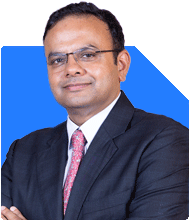Sir,
I' am 44 Yr. old and doing small savings in LIC and around 6.5 lakhs invested in shares. how can further improve my financial status to grow money.
Ans: Assess Your Current Financial Position
Your dedication to saving and investing shows financial discipline.
LIC savings provide insurance and assured returns but may underperform inflation-adjusted growth.
Rs 6.5 lakhs in shares is a good start for wealth accumulation but is highly dependent on market fluctuations.
You have taken initial steps toward financial independence; now focus on optimising and growing your wealth.
Define and Prioritise Your Financial Goals
Start by clearly defining your short-term, medium-term, and long-term financial goals.
Short-term: Emergency funds, annual vacations, or gadget purchases.
Medium-term: Children’s higher education or down payment for a house.
Long-term: Comfortable retirement, wealth creation, or supporting dependents.
Assign time frames and target amounts to each goal.
Prioritise based on urgency and importance to streamline your investment strategy.
Evaluate and Enhance Insurance Coverage
Life Insurance: Review your current LIC policies. Check if the coverage is adequate to secure your family’s future. A term plan may provide better protection at a lower cost.
Health Insurance: Ensure you have comprehensive health coverage for the family. Choose a policy with adequate sum assured, including critical illness cover.
Avoid combining investment and insurance. Pure insurance plans like term plans are more cost-effective.
Optimise LIC Policies for Better Returns
LIC policies typically offer low to moderate returns compared to inflation and market-linked options.
Evaluate the surrender value, lock-in period, and maturity benefits of existing LIC policies.
If the returns are unsatisfactory, you may consider surrendering or withdrawing them partially.
Reinvest the proceeds into diversified mutual funds for better long-term growth.
Diversify Your Investment Portfolio
Avoid over-concentration in direct shares, as they are highly volatile and require in-depth research.
Mutual Funds: Include equity mutual funds for professional management, diversification, and inflation-beating returns. Choose funds aligned with your risk appetite and goals.
Debt Funds: Invest in debt mutual funds for stability and steady returns, especially for short-term goals.
Gold: Consider allocating 5-10% of your portfolio to gold or gold funds to hedge against inflation.
Mutual Funds: A Better Investment Option
Actively managed funds provide opportunities for higher returns than passive investments like index funds.
Regular funds offer benefits like professional advice and regular portfolio reviews by Certified Financial Planners.
CFPs ensure your investments are aligned with your long-term financial objectives.
These funds are ideal for investors seeking growth while minimising direct market exposure.
Build an Emergency Fund
Create a liquid emergency fund covering 6-12 months of your household expenses.
Use liquid mutual funds or high-interest savings accounts for this purpose.
This ensures financial stability during unforeseen circumstances like job loss or medical emergencies.
Focus on Retirement Planning
At 44, retirement planning becomes critical to securing your post-retirement lifestyle.
Start by estimating monthly expenses during retirement, considering inflation.
Invest in a balanced mix of equity and debt instruments to build a sustainable retirement corpus.
A systematic investment plan (SIP) in equity funds can help accumulate wealth over time.
Strategic Tax Planning
Review your tax-saving investments under Section 80C to maximise deductions.
ELSS (Equity Linked Savings Scheme) mutual funds offer tax benefits and higher growth potential.
National Pension System (NPS) provides an additional Rs 50,000 tax deduction under Section 80CCD(1B).
Ensure your tax-saving investments align with your financial goals and time horizons.
Monitor and Rebalance Your Investments
Periodically review your investments to assess performance and alignment with goals.
Rebalance your portfolio to maintain the desired equity-to-debt ratio as market conditions change.
Avoid impulsive decisions during market volatility; focus on the long-term potential of your investments.
Avoid Common Investment Mistakes
Do not mix insurance and investment in one product, as it often leads to suboptimal returns.
Avoid relying solely on direct equity investments unless you have expertise in stock analysis.
Stay patient with equity investments, as they require a long-term horizon of 5-7 years for optimal growth.
Final Insights
Improving your financial status requires a well-thought-out and diversified investment plan.
Reassess your LIC policies and direct equity investments to optimise returns.
Diversify into mutual funds, build an emergency fund, and focus on tax-efficient investments.
Work with a Certified Financial Planner to develop a tailored strategy for your financial goals.
Take consistent and disciplined actions to grow your wealth and secure your financial future.
Best Regards,
K. Ramalingam, MBA, CFP,
Chief Financial Planner,
www.holisticinvestment.in
https://www.youtube.com/@HolisticInvestment



























